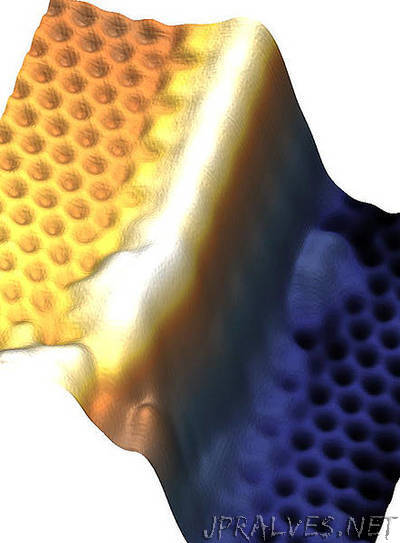
“It’s ultra-thin, electrically conducting at the edge and highly insulating within – and all that at room temperature: Physicists from the University of Würzburg have developed a promising new material. The material class of topological insulators is presently the focus of international solids research. These materials are electrically insulating within, because the electrons maintain strong bonds to the atoms. At their surfaces, however, they are conductive due to quantum effects. What is more: The electron has a built-in compass needle, the spin, whose orientation is capable of transmitting information very efficiently. It is protected against scattering when moving through these surface channels. With these properties, topological insulators could make an old dream come true: direct spin-based data processing, the so-called spintronics. Until now, however, there has been one major obstacle to using such surface channels for technical applications: “As the temperature of a topological insulator increases, all quantum effects are washed out and with them the special properties of the electrically conducting edges,” Dr Jörg Schäfer explains; he is a private lecturer at the Chair of Experimental Physics 4 of the University of Würzburg. For this reason, all known topological insulators have to be cooled to very low temperatures – usually down to minus 270 degrees Celsius – to be able to study the quantum properties of the edge channels. “Of course, such conditions are not very practicable for potential applications such as ultra-fast electronics or quantum computers,” the physicist says. A team of Würzburg physicists has now presented an entirely new concept to elegantly bypass this problem. Members of the team included Professor Ralph Claessen and private lecturer Dr Jörg Schäfer from the Chair of Experimental Physics IV and Professor Ronny Thomale, Professor Werner Hanke and Dr Gang Li from the Chair of Theoretical Physics I. The scientists have now published their results in the current issue of Science.”
Link to article
